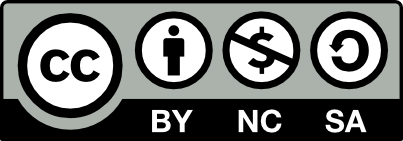Retinoblastoma
Classification according to ICCC: V.
Contents
Definition
Retinoblastoma is an eye cancer arising from the retina. Its incidence rate is about 1 case per 18,000 newborns per year. Approximately two thirds of cases are diagnosed in the first three years of life, with a peak in the first and second year of life. Retinoblastoma is diagnosed very rarely in children aged over 6.
Aetiology
Approximately 40 to 50 percent of patients have a hereditary form of the disease, largely due to a point mutation in the Rb1 gene; retinoblastoma is a familial condition in 10% of patients. About 50–60% of patients have a sporadic form of the disease, which is caused by somatic mutations in both alleles of the Rb1 gene.
Symptoms
Symptoms of retinoblastoma are the same for both the sporadic and hereditary form of the disease. In the hereditary form of the disease, however, symptoms occur earlier, and retinoblastoma can affect both eyes (bilateral retinoblastoma), or even the central nervous system (trilateral and quadrilateral retinoblastoma). A small tumour can go unnoticed, because a young child cannot tell that she is losing her sight. The growing tumour leads to a gradual loss of visual acuity in the affected eye, and the child begins to squint. A sudden onset of squint in a small child is therefore a reason for a thorough eye examination. Retinoblastoma is often found when a parent or a doctor notices a child’s eye looks unusual. White pupillary reflex is the most common early sign of retinoblastoma. Normally when someone shines a light in the eye, the pupil (the dark spot in the centre of the eye) looks red because of the blood in vessels in the back of the eye. In an eye with retinoblastoma, the pupil often appears white or pink instead, which is known as a white pupillary reflex (or leukocoria). Further growth of the tumour leads to an enlargement of the eye, as well as reddening and swelling of the surrounding area.
Diagnosis
The diagnosis is made upon an eye examination, which is usually performed in general anaesthesia in young children, and is completed with ultrasonography and a RetCam examination. Location of the tumour is so typical that histological diagnosis is not required. Examination of both eyes, MR scan of orbits and brain, possibly even an examination of the cerebrospinal fluid, is necessary in order to evaluate the stage of the disease.
Therapy
Treatment of retinoblastoma depends on the form and stage of the disease. It is based on the combination of a local intraocular therapy (cryotherapy, transpupillary thermotherapy, brachytherapy, intravitreal and periocular administration of cytostatic drugs) and systemic chemotherapy, or lately a modern intra-arterial chemotherapy administered into the ophthalmic artery after a superselective microcatheterisation. Enucleation is still necessary in some cases. Treatment of retinoblastoma is individual, and a close cooperation between oncologists and ophthalmologists is essential. Treatment is rather different for the sporadic and hereditary form of the disease. External beam radiotherapy is nowadays used only rarely, because its side effects in the facial region are rather serious in young children. High-dose chemotherapy with an autologous transplantation of haematopoietic stem cells is the choice of treatment for patients with a metastatic disease (which occurs very rarely in the Czech Republic).
Treatment outcomes
Treatment outcomes depend on the disease stage at the time of diagnosis. The survival rate is almost 100% for intraocular retinoblastomas, but as low as 0–40% for the metastatic disease.
The modern treatment of retinoblastoma not only aims to cure the disease, but also to preserve the patient’s sight and to ensure a good quality of life, which is linked to a potential loss of sight and late effects of treatment (secondary malignancies in particular); this applies mainly to the hereditary form of the disease.
This chapter was authored by:
Tomáš Kepák, M.D., Ph.D.
Department of Paediatric Oncology
University Hospital Brno




